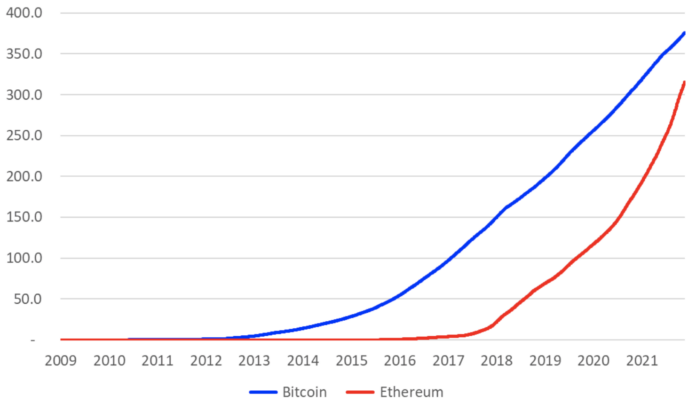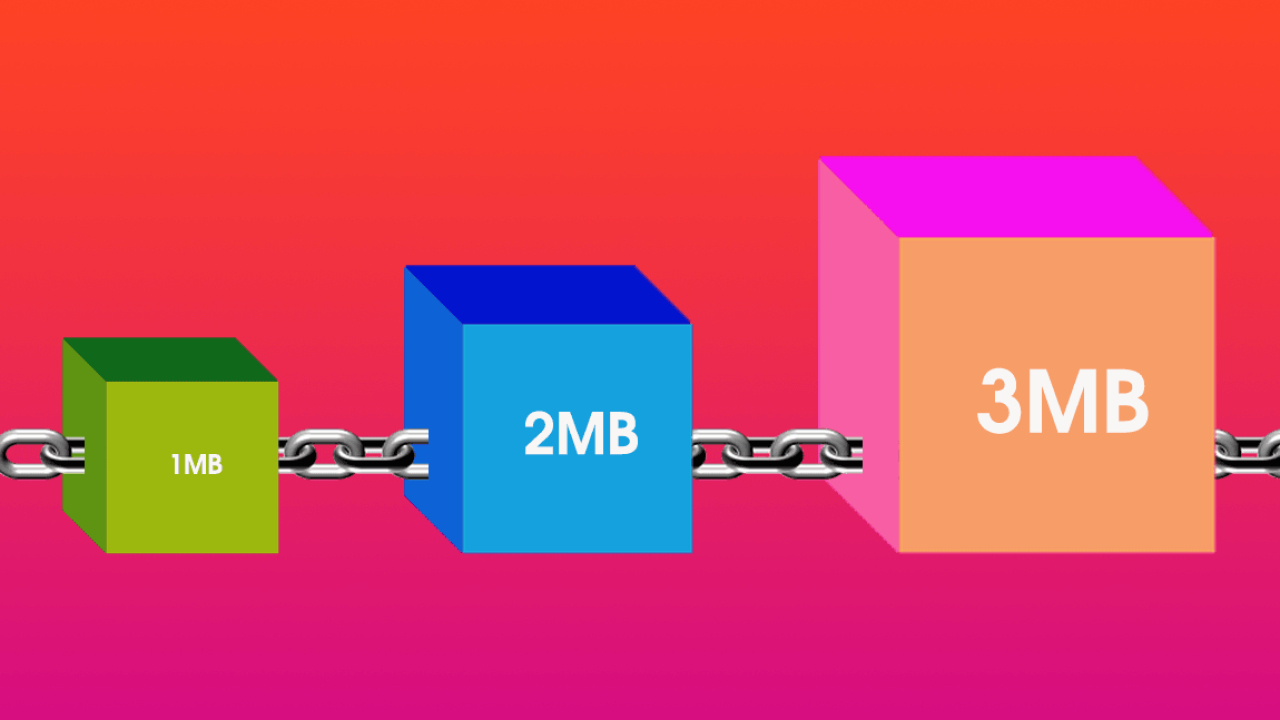How Big Is The Bitcoin Blockchain
According to Blockchain.com, the total size of the Bitcoin blockchain surpassed 324 gigabytes of data in February.
This is the total size of the Bitcoin transaction history during the last ten years. It is also the amount of data that complete mining nodes must download and store on their hard disks after synchronizing with the Bitcoin network.
While this may appear to be a large quantity of data, a terabyte hard disk would readily cover it—and would continue to do so for another decade or two. In comparison, an archive node on the Ethereum blockchain is already over five GB in size—and expanding at breakneck speed with increased block sizes—while a pruned node is only 165GB.
However, in comparison to its early days, the Bitcoin blockchain has grown at a quicker rate in recent years. This is partly due to an increase in the number of daily transactions and the implementation of the scaling solution SegWit, which essentially doubled block sizes to two megabytes.
How Big Is The Bitcoin Blockchain: Etherum vs Bitcoin
The first concern that this raises is how the Ethereum chain can be so small, at only 175GB. After all, Ethereum has a better transaction throughput than Bitcoin. Ethereum has recently grown into a beast, with high demand for Defi and NFT-related operations. It appears strange that all of this material is only a few hundred GB in size. Especially since practically every activity, a user does on Ethereum necessitates the use of a digital signature, which takes up a lot of space.
As a result, Ethereum is currently generating significantly more data than Bitcoin, although Bitcoin still has more cumulative blockchain data, as shown in the graphic below. From 2015 to 2018, Bitcoin's blockchain expanded faster than Ethereum's, but from 2018 to 2020, it appeared to grow in tandem. Finally, beginning in late 2020, the Ethereum blockchain's growth rate accelerated even further, and it is already far beyond Bitcoin's. The cumulative blockchain size of Ethereum appears set to quickly overtake Bitcoin and surge far beyond it.

In both cases, for Bitcoin and Ethereum, the total blockchain size in the figure above includes all transaction data; this is all the data that must be downloaded from peers in order to properly synchronize and verify the chain. This includes all digital signatures used to authorize each transaction. In the case of Ethereum and Geth, we tested the inclusion of signatures by unplugging our Geth node from the internet and successfully obtaining digital signatures from several sample transactions, including those from 2016 and 2017. The Ethereum blockchain data also contains all of the code required to deploy each smart contract, and we verified the presence of this code on our local system, which has a few hundred GB of storage.
